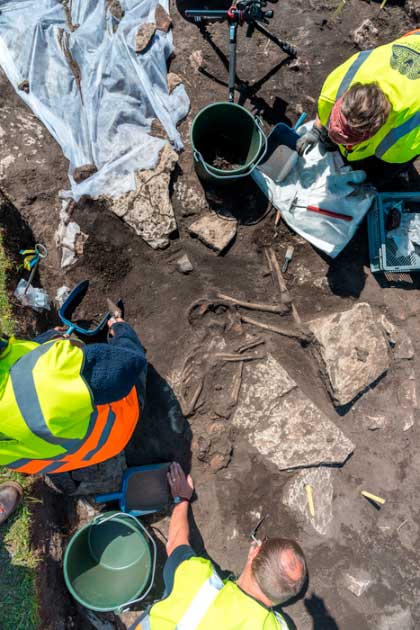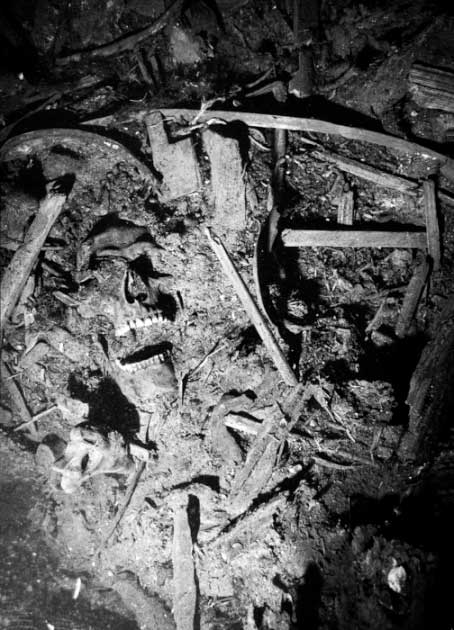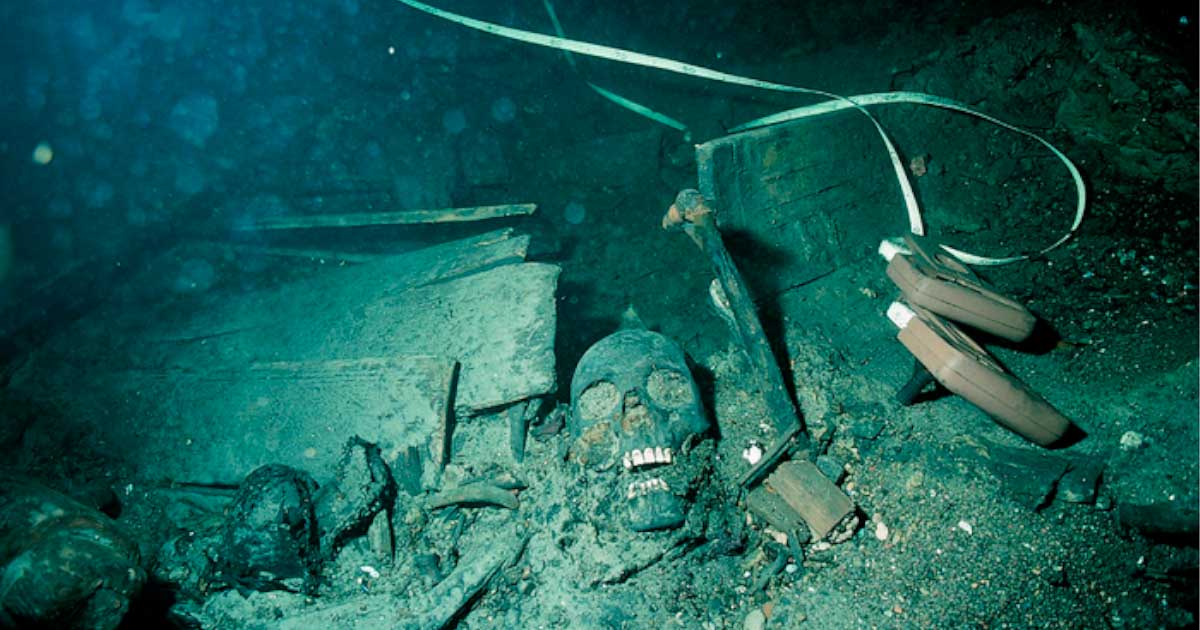Irresistible Vikings? Charting Sex Bias and Gene Flows Into Ancient Scandinavia
A team of genetic scientists from Sweden turned their scanners on Viking DNA samples. They have now charted the “genetic flow” of ancient Scandinavia showing that incomers genetics didn’t fare so well as the native’s DNA, and women came there from both east and west.
The discipline known as “archaeogenetics” is the study of ancient DNA using molecular genetic methods of analysis, to draw conclusions on how past cultures intermingled and interbred. Now, a new study published this week in the journal Cell presents the results of a genetic study spanning 2,000 years from the Iron Age to the present day, across ancient Scandinavia.
The new study was conducted by scientists from Sweden's Stockholm University and deCODE genetics based in Reykjavik, Iceland. By looking at DNA samples, the migration patterns “gene flow” during the Viking age (750–1050 AD) was mapped. The researchers show that blood lineages who arrived in Scandinavia during the Viking Age “declined for reasons that aren’t clear”.
- Iron Age Europe: 2000 Years Of Change Rolls Across The Continent
- History of the Vikings: All You Need to Know
Low Level Non-Native Ancestry
To get to their conclusions the team of researchers analyzed “48 new and 249 published ancient human genomes.” Dr. Anders Götherström from Stockholm University says, “There is so much fascinating information about our prehistory to be explored in ancient genomes.” He explained that the sample set was collected from “multiple iconic archaeological sites.” These ancient DNA samples were then compared with genetic data from more than “16,500” modern Scandinavians.
Ricardo Rodríguez-Varela of Stockholm University wrote that although still evident in modern Scandinavians, “levels of non-local ancestry in some regions are lower than those observed in ancient individuals from the Viking to Medieval periods.” What this means is that ancient individuals with non-Scandinavian ancestry appear disproportionately less in the modern Scandinavian gene pool, “compared with the patterns observed in the archaeological record.”

Sandby borg archaeological excavations. (Daniel Lindskog/ Cell Press)
Three Projects Melted Together Into One
Dr. Rodríguez-Varela says that in the beginning three individual studies were being conducted on Sandby Borg, at a boat burial, and on the man-of-war Kronan. This new study brings these three projects together and analyses DNA from various times including “the Vendel period boat burials, Viking period chamber burials, and well-known archaeological sites like the Migration period Sandby Borg ringfort, known for the massacre that occurred there [in] 500 AD,” wrote the researchers.
For comparison, genetics from the 17th century royal Swedish warship Kronan were compared to the ancient samples. It was at this stage the team began to notice a reduction in DNA from non-local ancestry across the various periods and regions of Scandinavia. Looking at how ancient migrations influenced the modern Scandinavian gene pool, the team of researchers identified regional variation in the timing and magnitude of gene flow from the eastern Baltic, the British-Irish Isles, and southern Europe”.
- The Crime of Sandby Borg: Site of a 1,600-Year-Old Tragedy in Sweden
- Ancient DNA Reveals Hitherto Unknown Aspects of Human Evolution

Underwater Kronan excavations. (Lars Einarsson/Cell Press)
Charting The Flows Of Ancient DNA
The results of the DNA study show that eastern Baltic ancestry was more localized to Gotland and central Sweden. On the other hand, British Irish ancestry was widespread in Scandinavia from the Viking period. However, a drop in the current levels of external ancestry in some regions suggests ancient immigrants “contributed proportionately less to the modern Scandinavian gene pool than indicated by the ancestry of genomes from the Viking and Medieval periods,” according to the paper.
The researchers also observed that a north-south genetic cline that characterizes modern Scandinavians “is mainly due to differential levels of Uralic (Hungarian) ancestry.” (A cline is a gradient of morphological or physiological change in a group of related organisms, usually along a line of environmental or geographic transition).
How the Viking Era Influenced Gene Flow
Götherström says what the newly obtained data reveal about the nature of the Viking period “is perhaps most intriguing”. Migrations from the west impacted all of Scandinavia but the migration from the east was “sex biased,” with a majority of the incomers being female. The researchers concluded that this finding represents “a major increase [in gene flow] during the Viking period.” Furthermore, it points towards a female bias in the introduction of eastern Baltic and, to a lesser extent, British-Irish ancestries,” wrote Rodríguez-Varela.
Overall, the researchers said their new findings demonstrate that the Viking period in Scandinavia was “a very dynamic time.” And they stated that in future studies they would aim to pinpoint exactly when the north-south cline was shaped, based on ancient DNA datasets from the far north.
Top image: Underwater Kronan excavations that were one of the sources of ancient Scandinavian genes in the study. Source: Lars Einarsson/Cell Press
By Ashley Cowie




















Comments
The girls would probably have BEEN owned if they STAYED. The boys would stay to help fight off the tyrants. Let’s not forget how ruthless were the (so-called) Romans were, and the merchant types, proverbial serpents who sailed in with them, with their shiny apples, and lust for money and power, to enslave by tricks – like taxes.
The good fathers probably heard that the ‘old country’ fiord villages were still free. But they weren’t about to just turn over their land in Britain to the tyrants. They’d fight first, while protecting the women, as per the proclivity of men of all creeds who love their people.
But as for female slaves, the Semitic Hyksos were known for that, bringing in garment workers to Egypt (before getting expelled). Not so up North, where women were seen more as sexual possessions, and many were in fact being taken by force, by the Semitic pirates, for sale in the Turkish markets, as top dollar concubines. Some boys too, to-be eunuchs. This all well documented.
Nobody gets paid to tell the truth.
Female immigrants into Scandinavia? Or slaves?
Probably a case of good fathers shipping off their pretty daughters before the feudel lords (remnants of the Romans) could see them and take them away.
But the study misses the much more interesting focus – hair color. Was it once all fair, or mostly? And how different compared to now? Tell us about the history that caused that!
Nobody gets paid to tell the truth.